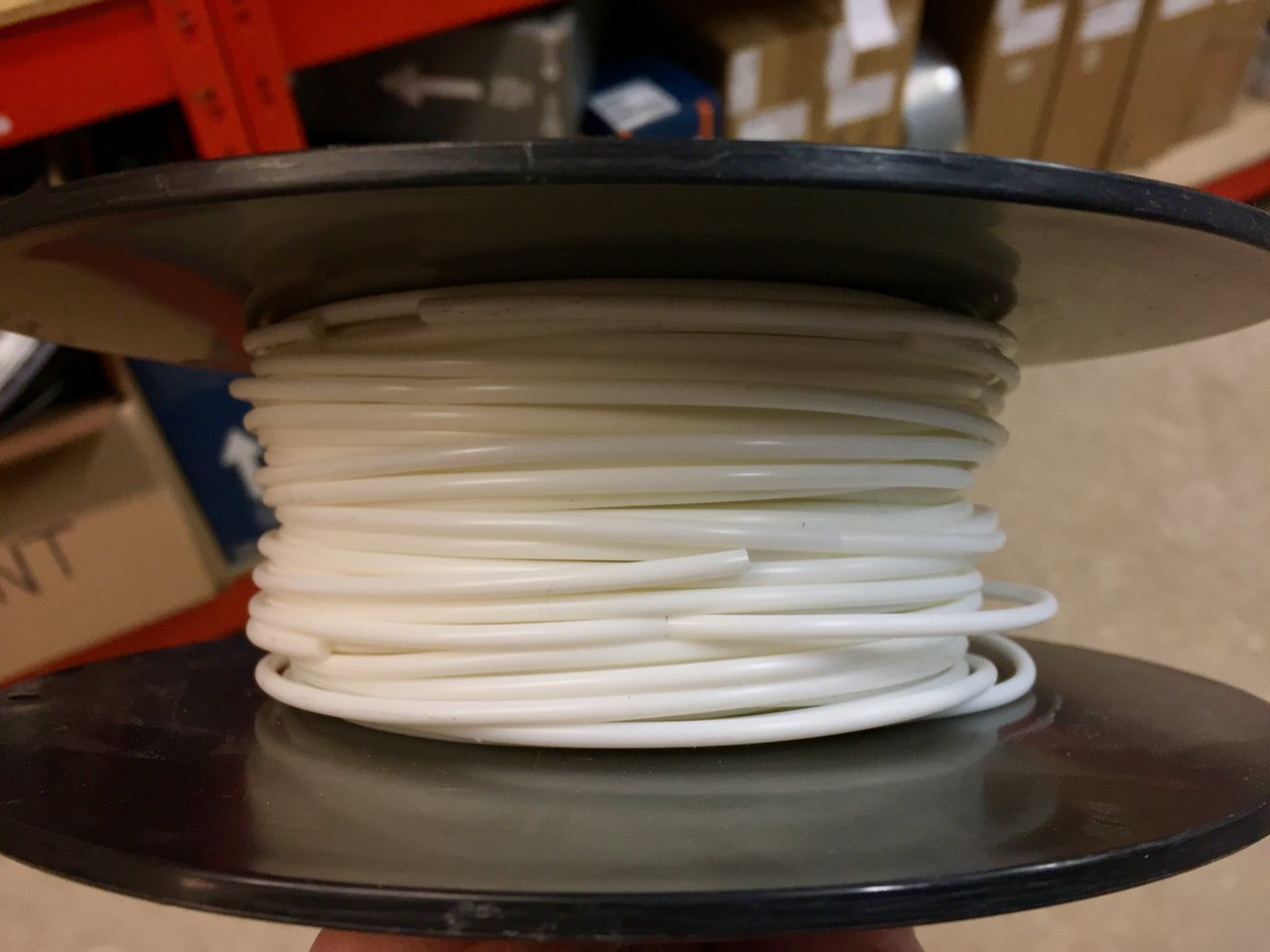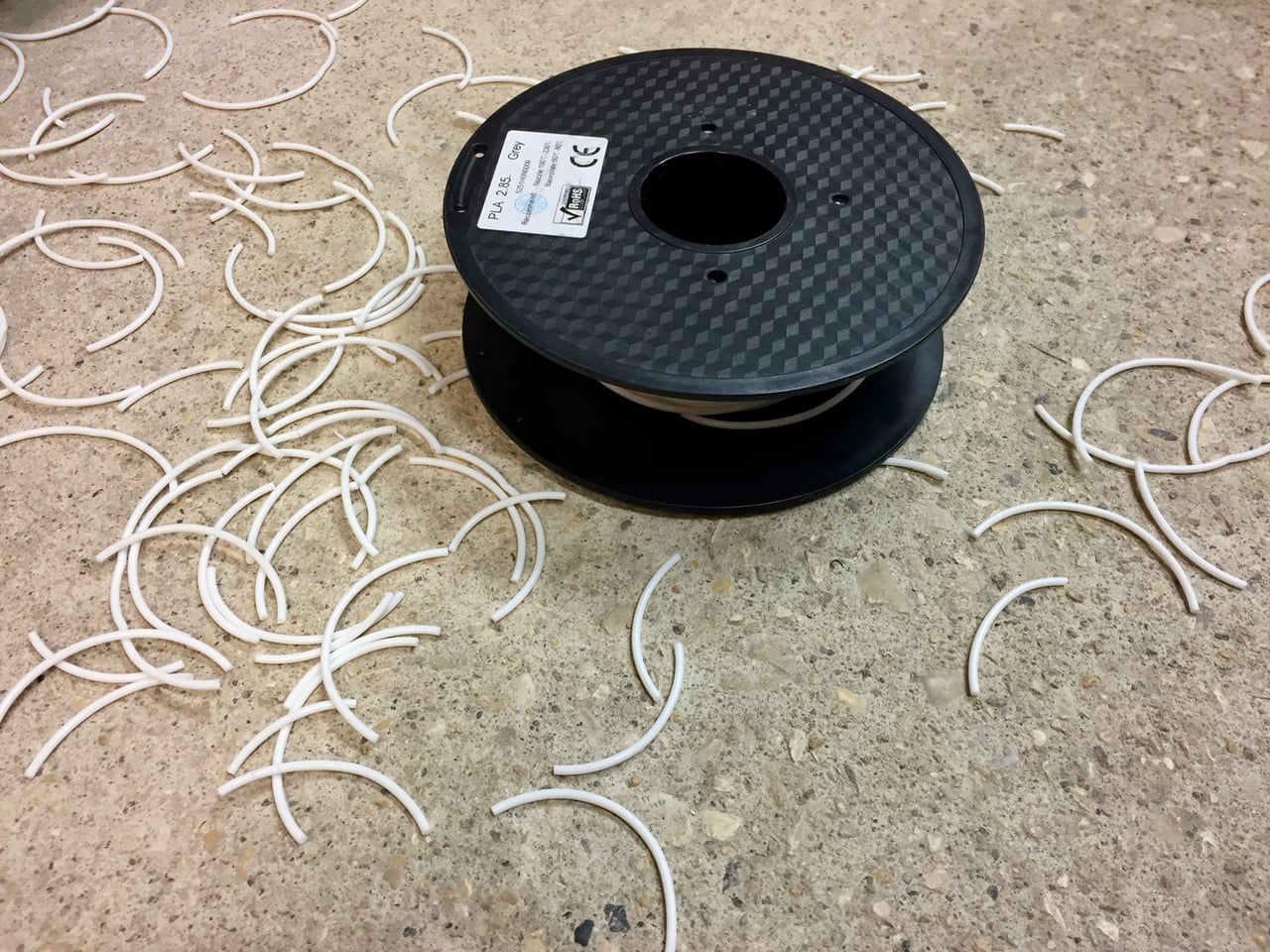
The image you see here is of a real situation where a spool of aging PLA filament literally exploded.
The spool in question was about a year old and had been stored “open”, as opposed to being stored in a sealed container with desiccant.
Somehow this particular spool was dislodged from a shelf in the workshop and fell a meter to the concrete floor where the shock splintered the now-fragile filament into a million (well, dozens) of small pieces.
I’ve never seen such a pathological case of filament degradation as this.

Most often filament degradation is observed at a much earlier stage, where the problem is detected and either rectified or the filament is tossed.
The most frequent occurrence of filament degradation I’ve seen happens in the feed tubes, typically when a PLA filament has been sitting idle for more than a week. You’ll gradually see the PLA filament crack into increasingly smaller pieces as the natural curve of the filament disagrees with the curve of the feed tube.
That’s easy to resolve by poking out the separated bits from the feed tube, as the remainder of the filament, which remains wound on the spool, has somewhat less exposure to the environment and is usually ok. But it means your filament is “on notice” for impending failure and you should use it up soon.
Resolving the situation usually involves removing absorbed moisture from the filament through a drying system. I wouldn’t advise putting your filament in the oven, however, as you may not be able to properly control the oven temperature and could deform the filament.
There are an emerging number of specialized filament dryers becoming available. These units are designed to slowly heat a spool of filament to remove moisture at an appropriate rate – or better yet, maintain a moisture-free spool.
But for those without such a device, the best practice is to always store your spools in sealed containers. A common approach is to keep the filament in a sealed plastic sack with a small bag of desiccant. More complex setups involve sealed boxes able to handle a number of spools at once.
My advice: don’t let your filament explode.

